The following itinerary and activities were all done on foot and, to be honest, it was quite tiring, so if you feel like doing a similar route feel free to take the bus, the train or the metro to give your feet a little rest every now and then.

Day One
From the lovely neighbourhood of El Born, we started walking up to Montjuïc Mountain in the lively district of Sants-Montjuic. This wonderful area was constructed during the first world exposition in 1929 and is a must-see if it is your first time in Barcelona as the views from atop are nothing sort of spectacular. Furthermore, the many trees and gardens provide a lot of shadow so you can visit even when temperatures are very high.
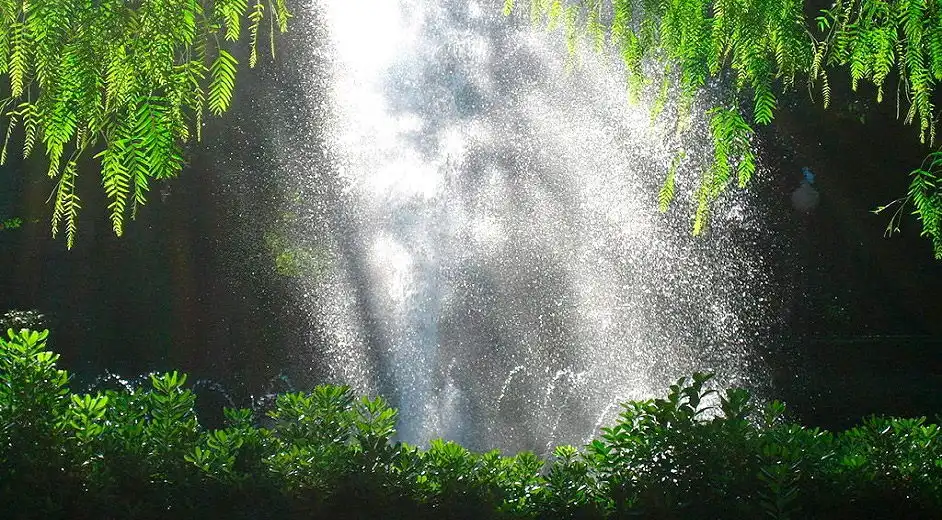
Once in the park, look for the Teatre Grec (Passeig de Santa Madrona 36, 08038 Barcelona +34 933 16 10 00), a fabulous Greek amphitheatre whose story is just as mesmerising as its looks. Before it became a theatre, this place was used to cut out stones in order to build the king’s residence; which is just a few meters away from the park. When all the stones were cut out, the mayor and the planning team decided to use this wall as an amphitheatre and it still hosts a lot of great plays and music festivals.

From there, we walked to the nearby Joan Maragall Gardens. Located by the Palacete Albéniz, the official residence of the Spanish royal family in Barcelona, these grassy green environment was in fact, created for a king back in the 19th century and is full of sculptures and fountains. We were totally surprised by its beauty and the serenity it offered while being in the middle of such a busy city. It is no wonder why some people consider these gardens to be the most beautiful in Barcelona.
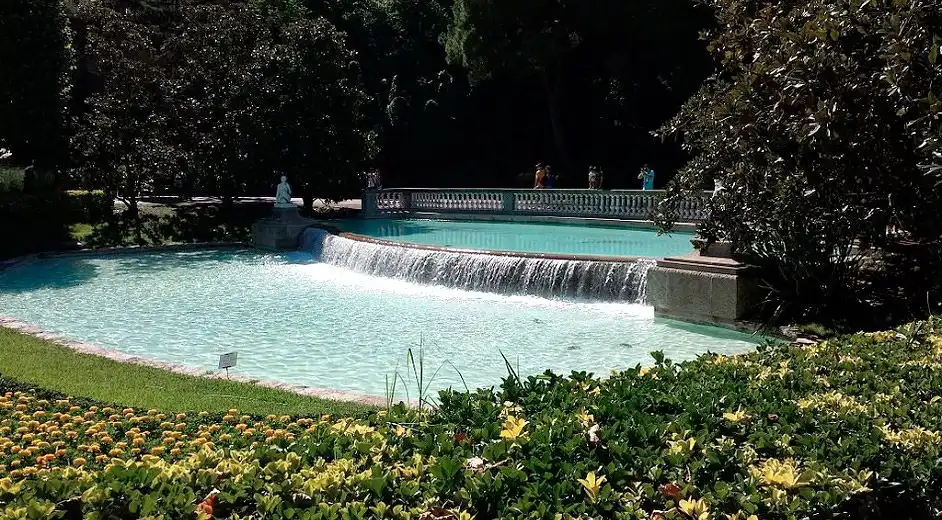
After a well-deserved break, we headed towards the old gondola that would bring us down to Barcelona’s Port and the beach. On our way we passed the Joan Miró Foundation (Parc de Montjuïc s/n, 08038 Barcelona, +34 934 439 470), a modern art museum honouring the late artist Joan Miró that everybody says is worth visiting. We also walked past the amazing Piscina Municipal de Montjuïc (Miramar 31, Barcelona, +34 934 430 046), the former Olympic swimming pool for the 1992 Olympic Games now open to the public.
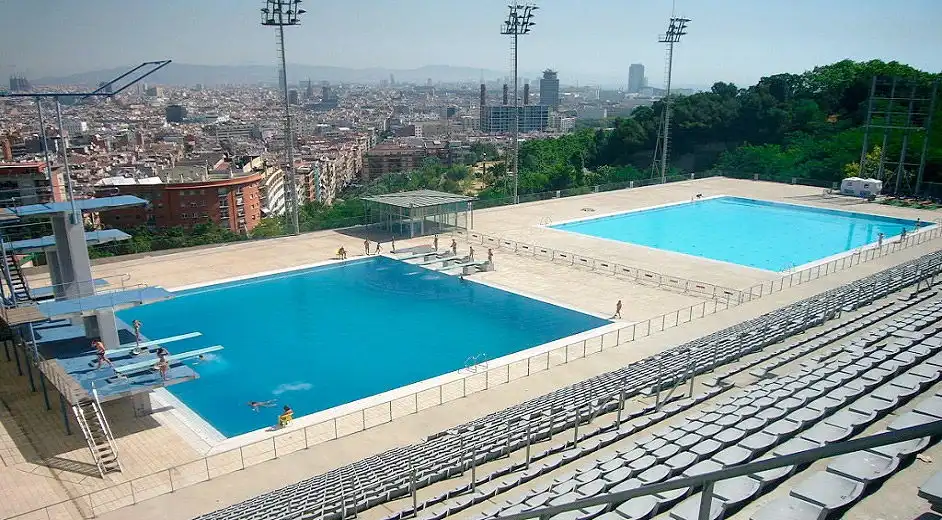
If you are considering following our steps during your next visit in Barcelona, make sure you have your bathing suit with you and enjoy the unbelievably beautiful view from here – I have rarely seen something more beautiful. The pool is open every day from 11am to 6.30pm and tickets cost €5,63 for adults and €3,93 for children between 6 and 14 and seniors over 65.

If you feel like taking a luxurious break, I highly recommend the café at the wonderful five-star hotel Miramar (Plaça de Carlos Ibáñez 3, 08038 Barcelona, +34 932 811 600). Just next to the gondola and the Mirarmar you can find the small but gorgeous Mossèn Costa i Llobera Gardens, home to the biggest collection off cactuses in Europe. I am usually not a big fan of botanical parks but this one somehow caught my attention and I am not sure why, maybe it was just because of the sheer beauty of the entire place.

So from here we finally took the gondola down to the beach. Make sure that if you want to ride this amazing old-fashioned gondola you start at the hillside and not the beach because the queues from Barceloneta can be really long and this way you can avoid waiting in the sun and the heat.
And now check out where to eat the best tapas in Barceloneta!

Once you step out of the gondola you’ll be surprised to see how different the landscape is; after all, you now are in the hip area of the Barceloneta neighbourhood, part of the Ciutat Vella District. If you have more than 48 hours or would like to spend a long time at the beach, I recommend you to check out the amazing five-star hotel W Barcelona (Plaça de la Rosa dels Vents 1, 08039 Barcelona, +34 932 952 800) On your way to the holte, you will come across the amazing, and legendary, sports centre Club Natació Atlètic-Barceloneta (Plaça del Mar s/n 08003 Barcelona, +34 932 210 010) Located right on the beach, it has an indoor pool and an outdoor Olympic pool, as well as a gym and a spa. A day ticket costs €12,19 for adults and it opens from 7am to 11pm.

We took it really easy and walked down to the historic area of Barceloneta and visited the quaint Plaça de la Font, which means ‘square of the fountain’ in Catalan; you will notice that there are lots of fountains in the city. Here we stopped for a meal break at Els Fogons de la Barceloneta (Plaça de la Font s/n, 08003 Barcelona, +34 932 242 626). After savouring some great fish tapas and sardines a la brasa (grilles sardines), we moved on to the beach to take a refreshing swim in the amazingly pretty clear water of the Mediterranean Sea.

Fully refreshed, we walked back towards the city centre and the popular La Rambla de Catalunya. On your way back you will pass by the impressive National Art Museum of Catalunya (Palau Nacional, Parc de Montjuïc s/n, 08038 Barcelona, +34 936 220 360) If you are visiting over a weekend you will be pleased to know you can access for free on Saturdays from 3pm onwards and the first Sunday of each month. Opening times are from 10am to 6pm during winter and 10am to 8pm during summer; on Sundays the museum is only open from 10am to 3pm. Whether you like art or not, make sure you go up the stairs to the rooftop terrace to enjoy a scenic drink with one of the most beautiful and less touristic views of Barcelona as background.

Start now discovering the unique places we visited on Day Two!
Day Two
After a good night´s sleep, we started the new day full of energy and the willingness to explore the neighbourhood of El Born and El Raval, famously depicted in Woody Allen’s ‘Vicky Cristina Barcelona.’ These areas are east of La Rambla and have a very special touch that makes them absolutely worth visiting. In fact, it was here where we made one of our trip’s best discoveries: the wonderful restaurant and café Norai Raval (Av de les Drassanes 1, El Raval 08001 Barcelona, +34 666 91 99 98 open every day from 9am to 8pm)

Alongside the organic products and the wonderful setting (part of the Maritime Museum), we loved the fact that the restaurant gives its waiters the chance to reintegrate into society. In the alley next to the café, you will find several pictures of older and younger people being photographed together. The story behind them is that these older Spanish people had to leave their hometowns for economic reasons and now take care of refugees coming from Africa and Europe in order to help them and support them as they once were supported by their fellow people.
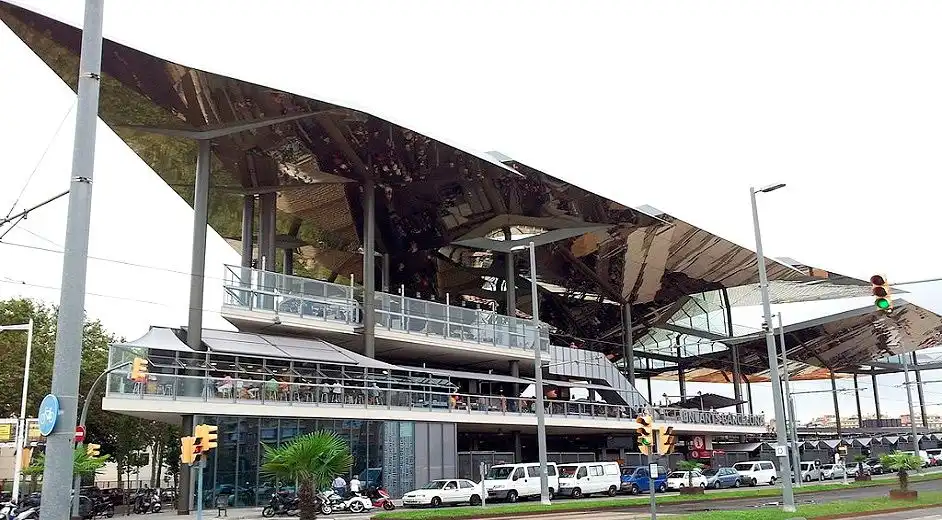
From Norai, we moved to Encants Barcelona (Plaça de les Glòries Catalanes 08013 Barcelona), the biggest flea market in the city and one of Europe’s oldest. It is also known as Mercat-Fira de Bellcaire, Encants Nous, Encants Vellas and El Nous Encants Vells by locals and this is due in part to its quirky story. At first sight you will probably find it hard to imagine that the area surrounding it, used to be one of the worst parts of the city. In order to upgrade it, the City Council decided to build a new hall for the popular flea market and in September 2013, a modern, futuristic looking, perhaps even overachieved, building opened its doors for the first time. And the contrast between selling super cheap second hand stuff and the architectural complexity leaves no one indifferent. If you are interested in another genuine local experience, make sure you visit the restaurant inside: great food at great prices.

After checking out the many stands, we took the subway to go back to the city centre in order to visit Barcelona Museum of Contemporary Art (Plaça dels Àngels 1, 08001 Barcelona, +34 934 120 810 open all days except Tuesday from 11am to 7.30pm during the week, from 10am to 9pm on Saturdays and 10am to 3pm on Sundays) But to tell you the truth we did not go in, instead, we stayed in front of the museum to watch the amazing tricks performed by a group of skateboarders that were practicing at the square in front of the museum.
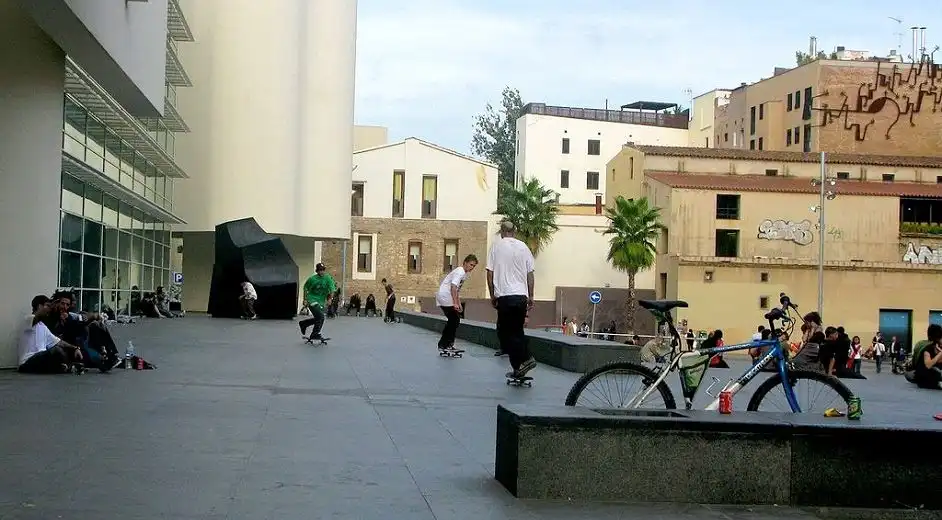

We ended our day visiting one of the numerous market halls of Barcelona. And there’s a story that I want to share with you about them because it fascinated me. The City Council of Barcelona felt that these markets were necessary to preserve small local businesses and essential to the communities, so they created a law that forbid selling groceries to larger supermarket chains on the ground level.

This meant that big supermarket chains had to either build very costly lower levels to sell groceries there or not sell fresh groceries altogether. Through this simple and efficient law the local market structure survived and is nowadays part of the identity of the habitants of Barcelona. So if you want to experience local businesses at its best and a genuine community feeling, you cannot stop visiting one of these market halls.









































 6
6
 3
3
 3
3





